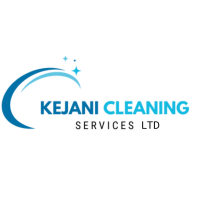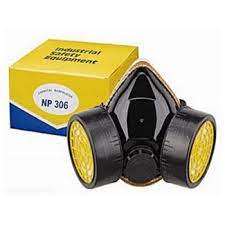Handling chemicals—whether in industrial cleaning, laboratories, healthcare, or agriculture—comes with serious risks. From skin burns to respiratory distress, chemical exposure can cause severe health issues or even death. That’s why Personal Protective Equipment (PPE) is non-negotiable when dealing with chemical substances.
In this article, we’ll explore:
-
The types of PPE used when handling chemicals
-
How each type works and when it is necessary
-
How to choose the right PPE based on chemical type
-
Best practices for chemical safety
🔹 Why PPE Is Critical When Handling Chemicals
Exposure to chemicals can cause:
-
Skin burns or irritation
-
Eye damage or blindness
-
Respiratory issues or chemical poisoning
-
Long-term chronic conditions like cancer or organ damage
PPE provides a barrier between the chemical hazard and your body, reducing the risk of exposure through inhalation, ingestion, or skin absorption.
🔹 Key Types of PPE for Handling Chemicals
1. Chemical-Resistant Gloves
-
Purpose: Protect hands from corrosive, toxic, or irritating chemicals.
-
Types:
-
Nitrile gloves (resist acids, oils, and solvents)
-
Neoprene gloves (resist acids, bases, and alcohols)
-
Butyl gloves (resist ketones and esters)
-
PVC gloves (suitable for water-based solutions)
-
🛠 Use Tip: Always check glove compatibility with the specific chemical. Never reuse disposable gloves.
2. Eye and Face Protection
-
Purpose: Prevent splashes, vapors, or chemical fumes from reaching the eyes and face.
-
Options:
-
Safety goggles (seal tightly around eyes; ideal for splash hazards)
-
Face shields (used with goggles for full face protection)
-
🛠 Use Tip: Face shields alone are not a replacement for goggles.
3. Respiratory Protection
-
Purpose: Prevent inhalation of toxic fumes, vapors, gases, or mists.
-
Types:
-
Dust masks (for dry particles – limited chemical protection)
-
Half-face respirators with chemical cartridges
-
Full-face respirators (protect eyes and lungs)
-
Powered air-purifying respirators (PAPR) for high-risk environments
-
🛠 Use Tip: Ensure a proper seal and fit test before entering the hazardous area.
4. Chemical-Resistant Clothing / Aprons
-
Purpose: Protects the skin and body from chemical splashes and spills.
-
Types:
🛠 Use Tip: Select clothing with sealed seams for better protection. Avoid absorbent fabrics like cotton.
5. Foot Protection
-
Purpose: Prevents chemical burns from spills on the floor.
-
Types:
-
Rubber boots
-
🛠 Use Tip: Avoid porous materials that can absorb chemicals.
6. Head Protection
-
Purpose: Protects scalp and neck from spills or splashes during overhead work.
-
Options:
-
Chemical-resistant hoods or caps
-
🔹 PPE Selection Based on Chemical Hazard
| Chemical Type | Recommended PPE |
|---|---|
| Acids/Bases | Goggles, gloves (nitrile/neoprene), apron, respirator |
| Solvents | Gloves (butyl/nitrile), respirator, goggles, full-body suit |
| Disinfectants & Bleach | Gloves, goggles, mask or respirator, apron |
| Pesticides | Full-body suit, gloves, face shield, respirator |
| Cleaning agents | Gloves, goggles, apron |
Always check the SDS (Safety Data Sheet) for each chemical to determine the appropriate PPE.
🔹 Proper Usage Guidelines
-
Inspect PPE before use – Look for tears, cracks, or signs of degradation.
-
Don PPE in the correct order – Gloves go on last, respirators before gloves.
-
Remove PPE safely – Avoid contact with contaminated surfaces.
-
Clean or dispose of PPE properly – Follow manufacturer or SDS instructions.
-
Store PPE away from sunlight and chemicals – Heat and UV can degrade materials.
🔹 Legal Requirements in Kenya
Under the Occupational Safety and Health Act (OSHA), 2007, Kenyan employers must:
-
Provide appropriate PPE free of charge
-
Ensure PPE is suitable for the specific task
-
Train employees on correct use and maintenance
-
Regularly inspect and replace worn-out equipment
Industries such as chemical manufacturing, laboratories, cleaning services, and agriculture must comply with DOSH Kenya standards and undergo regular safety audits.
🔹 Common Workplaces That Require Chemical PPE
-
Hospitals and clinics (e.g., disinfectants, pharmaceuticals)
-
Cleaning companies (e.g., bleach, detergents, acidic solutions)
-
Laboratories (e.g., solvents, acids, reagents)
-
Construction sites (e.g., sealants, paints)
-
Agricultural farms (e.g., pesticides, fertilizers)
🔹 Where to Buy Chemical PPE in Kenya
At Kejani Cleaning Services Limited, we supply high-quality, certified PPE for chemical handling, including:
-
Nitrile, neoprene, and butyl gloves
-
Safety goggles and face shields
-
Respirators with chemical cartridges
-
PVC aprons and chemical suits
-
Rubber safety boots
Final Thoughts
When working with chemicals, you’re only as safe as your PPE and safety practices. Never underestimate the damage a chemical can cause. The right gear can prevent long-term injury, save lives, and keep your team compliant with safety regulations.
👉 Need help choosing PPE for your chemical handling staff? Contact us today for expert guidance and bulk supply options.





0 Comments